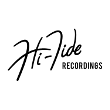Bernard

Joined: May 01, 2006
Posts: 104
Santa Monica



|

Posted on Mar 27 2020 08:49 PM
I am exploring the standards of mixing traditions as well as tones. I am very interested to know if anyone has a go-to formula that they use and are ok with sharing. On one hand it doesn't seem like rocket science but it is very interesting to hear distinctions between, say, instrumental surf tunes from the early to mid 60s that actually do not have too much reverb whilst others can be drenched in reverb. Some tunes lack kick. Some have faint bass parts. Oh and what about panning. It has me curious. Thoughts? Thanks! Bernard
— Par Avion Spotify
Par Avion Instagram
Par Avion Facebook
Par Avion Official
|
zunrj5
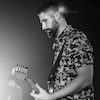
Joined: Jul 16, 2015
Posts: 259
ID





|

Posted on Mar 27 2020 09:18 PM
Great question! I’ve often wondered along the same lines - hoping for some good info!
— -John
The Seatopians 2017-
The Seatopians on bandcamp
|
DeathTide

Joined: Apr 13, 2018
Posts: 1378
New Orleans






|

Posted on Mar 27 2020 11:25 PM
Awesome question! One thing that I think was somewhat common wss the Glyn Johns 3-ribbon mic method of recording drums. (Which I absolutely love!) Not everywhere, but those old tracks with the roomy and boomy drums. I’d guess Bombora used that technique?
How did The Phantom Surfers record? Those records sound to me, like one or maybe two mics in a nice room, all based on where the drum set is. The lead cab would be closest? I have been listening to their first four LPs and a bunch of 7”es lately and man they sound so old school and cooool. Obvs they are way more lo-fi than basically all 1st wave surf haha!
If I had iso rooms for the cabs at practice, I’d use Glyn Johns + close mics + distant room mics for the drums, then choose what sound I want. Most likely the Glyn Johns mics would get the most play, then the close mics could provide some detail and bass, and the room mics would add any “life” needed. (This is totally my plan when I get good enough at guitar to record in a fancy studio with cab rooms.)
— Daniel Deathtide
|
djangodeadman

Joined: Jan 25, 2007
Posts: 1568
Brighton UK




|

Posted on Mar 28 2020 03:13 AM
*DeathTide wrote
If I had iso rooms for the cabs at practice, I’d use Glyn Johns + close mics + distant room mics for the drums, then choose what sound I want. Most likely the Glyn Johns mics would get the most play, then the close mics could provide some detail and bass, and the room mics would add any “life” needed. (This is totally my plan when I get good enough at guitar to record in a fancy studio with cab rooms.)
Surely the point of the Glyn Johns method is to avoid the need for close mics. Your approach would give added flexibility, of course. I think we’ve become so accustomed to the somewhat hyped sound of close mics on drums that we are probably reluctant to let go of them and opt for something more basic, such as the GJ method.
I imagine that very minimal mic setups were used on drums during the first wave. I’m sure there are people here who could tell us more about this.
On the last recordings that we did, the engineer used 15 mics on the kit (one of which was not really intended for use, but he liked the sound of it). I really wish I’d asked him to go for a much simpler approach; it would have made mixing one hell of a lot easier. I could, of course, just use one kick, one snare and the overheads, but it wouldn’t be the same as GJ and, once presented with the choices, it is so tempting to use them.
— Los Fantasticos
|
stratdancer
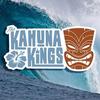
Joined: Dec 11, 2013
Posts: 2537
Akron, Ohio



|

Posted on Mar 28 2020 06:10 AM
Is this for a school project to replicate the sound from those 60's mixes to be played on AM radio through a 5 inch speaker? If you go to a live show and are pretty much center stage do you want to hear a mix that includes kick drum and bass with along great definition and clarity of the entire performance? That is the goal of the mix. Just like the old Memorex ad. Is it live or is it Memorex? Mix and listen through the crappiest system you have then listen to it on the greatest system you have access to and when your mix sounds great on both you have nailed it! That is the standard in IMHO.

— The Kahuna Kings
https://www.facebook.com/pages/The-Kahuna-Kings/459752090818447
https://thekahunakings.bandcamp.com/releases
|
stratdancer

Joined: Dec 11, 2013
Posts: 2537
Akron, Ohio



|

Posted on Mar 28 2020 06:34 AM
Over the last few months I have added to and updated my main stereo with some new amps, subs and speaker arrays all focused around my listening lounger. Just a great way to fully appreciate a great mix and master. The artist that seems to produce the greatest fidelity and sonic enjoyment is modern Joe. Although not surf, this is the standard I will use moving forward when I have the pleasure of finally mixing new music. Punch, depth, clarity and definition!
— The Kahuna Kings
https://www.facebook.com/pages/The-Kahuna-Kings/459752090818447
https://thekahunakings.bandcamp.com/releases
|
psychonaut

Joined: Dec 08, 2007
Posts: 1304


|

Posted on Mar 28 2020 07:13 AM
djangodeadman wrote:
*DeathTide wrote
If I had iso rooms for the cabs at practice, I’d use Glyn Johns + close mics + distant room mics for the drums, then choose what sound I want. Most likely the Glyn Johns mics would get the most play, then the close mics could provide some detail and bass, and the room mics would add any “life” needed. (This is totally my plan when I get good enough at guitar to record in a fancy studio with cab rooms.)
Surely the point of the Glyn Johns method is to avoid the need for close mics. Your approach would give added flexibility, of course. I think we’ve become so accustomed to the somewhat hyped sound of close mics on drums that we are probably reluctant to let go of them and opt for something more basic, such as the GJ method.
I imagine that very minimal mic setups were used on drums during the first wave. I’m sure there are people here who could tell us more about this.
On the last recordings that we did, the engineer used 15 mics on the kit (one of which was not really intended for use, but he liked the sound of it). I really wish I’d asked him to go for a much simpler approach; it would have made mixing one hell of a lot easier. I could, of course, just use one kick, one snare and the overheads, but it wouldn’t be the same as GJ and, once presented with the choices, it is so tempting to use them.
You only need 3 or 4 mics for a killer drum sound.
Glyn John's is my preferred drum mic'ing technique. Here's a pic from recording our last album:

Using a couple of rca ribbons as overheads, akg d12 on kick and a sure 545 on snare. ( The 58 type mic in the foreground is a talkback mic)
The secret to the GJ method is that you have to run the mic pre's much hotter than you'd think, like 10db hotter. This brings out the harmonics. Distance is key. One of the downfalls can be phasey cymbals, so you have to spend some time placing the overhead to avoid this. Works great although the drummer has to have his playing dynamics under control. And of course, a good sounding room is vital.
— https://www.facebook.com/coffindagger
http://coffindaggers.com/
http://thecoffindaggers.bandcamp.com
Last edited: Mar 28, 2020 07:55:44
|
simoncoil
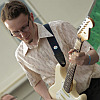
Joined: Sep 28, 2012
Posts: 925
Berlin, Germany





|

Posted on Mar 28 2020 07:41 AM
Ok, this is an interesting question, especially since my band is mixing new songs at the moment. (I would love a more trad/lo-fi mix, but I definitely am the only one in the band with that opinion.)
I don't know much about recording gear, and I sure wasn't around, when the songs of the first wave were recorded, but instead of purely speculating (which we had more than enough on this forum lately), I'm going to go with what I see on pictures and hear in the recordings, and leave it at a few remarks.
First of all, I think it's unlikely that the Glyn Johns technique was widely known around 1961-1964 (which is the time Bernard, the OP asked about). Johns started working as a recording engineer around 1962 in England and probbaly didn't develop this approach at recording drums right away.
What is visible in pictures from the sessions of the Challengers (World Pacific Studios) are single mic's as overheads and before the kick drum, as well as single mic's for the guitars and other instruments.


(Challenger pictures and attribution to World Pacific Studios by Randy Nauert, RIP)
With the Astronauts (RCA Studios) there seems to be a mic above the middle of the kit, maybe also a second one before the kick and hidden by the screen:

These are pictures from more professional places, smaller studios like PAL or Downey probably had a lot less equipment at hand, meaning that instruments probably shared mic's and their level could not be changed individually in level or EQ any more once they were recorded to three track (which was the maximum at this time). So mixing basically started by placing mic's and (re-)arranging the music.
So basically, while today the approach is often to make every instrument audible, surf recordings seem to be more about making the main instruments (the guitars and the sax) loud and proud, while everything else is more comping away in the background; often only just so loud that you can hear them at all. (For example, the kick drum on the first Challenger album is not audible at all most of the time, but you don't really miss it with a rhythm guitar and bass accentuating the beat anyway.)
Anyway, my approach for a trad style mix is to start with the guitar and then blend in "everything else" to taste without worrying about concerns from the drummer or bass player, that they don't hear themselves in the mix. In MONO! Well, maybe it's a good thing, that I'm not in charge of mixing records alone... 
— Los Apollos - cinematic surf music trio (Berlin)
"Postcards from the Scrapyard" Vol. 1, 2 & 3 NOW available on various platforms!
"Chaos at the Lobster Lounge" available as LP and download on Surf Cookie Records!
Last edited: Mar 28, 2020 07:47:10
|
psychonaut

Joined: Dec 08, 2007
Posts: 1304


|

Posted on Mar 28 2020 08:22 AM
|
Bernard

Joined: May 01, 2006
Posts: 104
Santa Monica



|

Posted on Mar 28 2020 10:32 AM
Wow some fantastic insights. Thanks for chiming-in.
stratdancer, thanks for asking and I should have prefaced my post with the fact that it was a request of a film and tv guy who is unusually particular. In essence, he said, "When I pitch a track for a movie that takes place in 1964, I sincerely want it to sound like it was produced back then". I agree with you in that it is useful to listen to a mix through different systems but I am not 100% sure if Satriani's production value should be part of the "trad" approach but must also add that a lot of the music I work on strives for production values beyond anything retro so I fully understand where you are coming from. Curiously, I wonder if Allen Whitman of the Mermen still works with Joe.
DeathTide - Good question re: Phantom Surfers.
simoncoil - WOAH love the deductive reasoning cross-referencing with the photos. Love it. One thing I find very entertaining is the distance between the amps and the microphones. When Said the Ripper recorded, we used distance micing to great effect. We also ran everything through tape BUT mixed in ProTools. I agree with the "Loud and Proud" and everyone else is sort of "lesser". It's hard not to wonder what sort of conversations (debates?) took place in the studio as years went on and more tracks became available. I can hear it now ... "Hey, I formed the band and there is no band without drums, turn me up goddammit!".
Since posting, I have had a few fun conversations. One of them echoed a thought that I had which was sloppy and trashy has it's place here. This is not to say that I am 100% ready to celebrate poor or cheap or hasty production methods but I think it is safe to say that in some cases, this played a role; even if not desired by the musicians. Limited budget? Limited studio access? Maybe I am just damaged by surf's cousin GARAGE but I hope you all understand my drift ... Maybe this could be best explained by how sometimes that spontaneous rehearsal recording on a phone or whatever still sounds better than anything after the song was more refined and brought to a studio.
Thanks again everyone. I really am enjoying this and it is helping with the cabin fever. I'll circle back for sure ...
Bernard
Edited to fix typos
— Par Avion Spotify
Par Avion Instagram
Par Avion Facebook
Par Avion Official
Last edited: Mar 28, 2020 10:36:30
|
stratdancer

Joined: Dec 11, 2013
Posts: 2537
Akron, Ohio



|

Posted on Mar 28 2020 10:45 AM
Thanks for the clarification and quite an ambitious and possibly fun project. Lot of history to learn and experiment with!
— The Kahuna Kings
https://www.facebook.com/pages/The-Kahuna-Kings/459752090818447
https://thekahunakings.bandcamp.com/releases
|
revmike

Joined: Feb 26, 2006
Posts: 3852
North Atlantic








|

Posted on Mar 28 2020 11:31 AM
The Surfites captured the 1960 s surf sound on their 3 albums for Double Crown Records. I think one of the members mentioned that one mic was used on the drum kit. The bass and drums are certainly mixed fairly low on those releases.
Rev
— Canadian Surf
http://www.urbansurfkings.com/
|
simoncoil

Joined: Sep 28, 2012
Posts: 925
Berlin, Germany





|

Posted on Mar 28 2020 01:29 PM
Good call on the Surfites! They are an excellent example for the possibility that you can get a 60s surf sound with very "un-trad" gear. (It probably doesn't hurt, that the songs are all excellent  .) .)
The guitars were recorded with reverb tanks and (cheap!) mic preamps directly into a digital 4 track:
https://surfguitar101.com/forums/post/30568/
https://surfguitar101.com/forums/post/30670/
https://surfguitar101.com/forums/post/31205/
And the drums were recorded with two just mic's and are indeed not very prominent in the mix:
https://surfguitar101.com/forums/post/187431/
Bernard, that sounds like a cool project! Keep us updated on the progess!
— Los Apollos - cinematic surf music trio (Berlin)
"Postcards from the Scrapyard" Vol. 1, 2 & 3 NOW available on various platforms!
"Chaos at the Lobster Lounge" available as LP and download on Surf Cookie Records!
Last edited: Mar 28, 2020 13:30:45
|
DeathTide

Joined: Apr 13, 2018
Posts: 1378
New Orleans






|

Posted on Mar 28 2020 02:38 PM
Haha I thought Glyn Johns method started in the 50s, a-whoopsies!
Not the fancy studio recordings like DD and Lively Ones, but many 1st wave surf sounds SUPER garagey. I keep internally referencing Bombora as possibly my all-time favorite sounding surf song, and that’s about as garagey as you can get without crossing into lo-fi!
Those garagey surf songs sound similarly recorded as doo-wop was a few years earlier. Some surf sounds has nearly identical production to indie “soulful” (that means black) doo wop. Stuff like Gone by the Gallahads, or Twilight by the Paragons. Those were studio recordings, but not the big fancy studios.
Apologies - I realize this is not a doo wop thread!
@psychonaut - I’m seeking the choice to use one sound vs. another in mixing! Maybe our more tradition songs get the Glyn Johns mics, and the more modern metal sounding songs get more close mics. Or something. The Phantom Surfers really get some incredible drum sounds for traditional-esque songs.
— Daniel Deathtide
|
zunrj5

Joined: Jul 16, 2015
Posts: 259
ID





|

Posted on Mar 28 2020 03:36 PM
I wanted to post this earlier but got distracted by the kids. Although it’s not surf specific it might give some insight to some of the early 60s recording techniques (even though it’s centered on the 50s). I’ve tried a few similar mic techniques on some of our demos and they’ve turned out pretty decent. Using different polar pattern to help isolate instruments in the same room can really yield some cool results.
— -John
The Seatopians 2017-
The Seatopians on bandcamp
|
CrazyAces
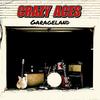
Joined: Jul 31, 2012
Posts: 4053
Nashville, TN.





|

Posted on Mar 28 2020 06:28 PM
Not sure if this helps or not but here are two home recorded songs using different drum mic'ing techniques.
The first recording, to have the sound match the simplicity of the song, was recorded with one overhead mic and a kick drum mic. I wanted a "kids walk into a studio in '63 and want to record a song quick" vibe/sound.
I mixed the kick too low in volume but there is a cohesiveness of the kit that makes it sound like an instrument not multiple instruments. The drums are also mixed in a more mono-like way on this.
The second recording utilized a Glyn Johns setup with an added snare mic.
You can hear more separation and frequency range on the kit in this song, definitely more modern and stereo sounding.
Although it is the same kit in the same room (different snares) this comparison is a little off due to the fact that the first recording was captured 16 bit/44K and the second 24 bit/48K
Also, not sure how good the sounds are after being uploaded.
Hope this helps some.
Cheers,
Jeff
— http://www.facebook.com/CrazyAcesMusic
http://www.youtube.com/user/crazyacesrock
http://www.reverbnation.com/crazyacesmusic
|
djangodeadman

Joined: Jan 25, 2007
Posts: 1568
Brighton UK




|

Posted on Mar 29 2020 01:09 AM
The Glyn Johns technique is inherently stereo, of course (not that it won’t work if collapsed to mono, provided the phase issues mentioned above are taken care of when positioning the overheads - often the distance from the centre of the snare drum is measured to make them equidistant; Johns himself talks about just moving them around until they sound right) and those early recordings were generally mono, hence the use of only one drum overhead.
From what I’ve seen him say, Johns usually recorded a snare mic, but often did not use it in the final mix.
— Los Fantasticos
Last edited: Mar 29, 2020 01:10:17
|
nedorama
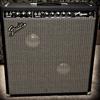
Joined: Oct 10, 2009
Posts: 228
South Bay, CA

|

Posted on Mar 30 2020 11:37 AM
One of the big limitations to 60's recordings besides multitrack recording was mixer channels - the Altec 1567 was the gold standard, and it has only 4 inputs. Some studios might have had 2 strapped together, but with a 4 piece instrumental band it can work. 3 mics for drums, 1 each for guitars, 1 bass, and maybe two room mics to get the whole band sound to mix to taste.
If you only have 4 channels and are recording live, you have to get a little more crafty...
—
'65 Fender Tremolux, '74 Princeton; 77 Vibrolux Reverb; '81 Princeton Reverb
'65-66 Hilgen Basso Grande
Dr. Z MAZ 18 Jr. + 1x12 Cab
Various Telecasters and noise-making pedals
Farfisa Compact Duo
|
PolloGuitar

Joined: Feb 26, 2006
Posts: 5098
San Francisco











|

Posted on Mar 30 2020 11:46 AM
Hi Bernard,
The nice thing about mixing to sound old is that you can mix subtractively. That is to say that it's easier to make a modern recording sound old, than an old recording sound new.
Of course you want to do what you can while recording- spend more time placing fewer mics, tune the room, record live with bleed, take off the headphones. Also, tune by ear to each other rather than to a tuner, and don't use a click track. Use vintage amps and guitars.
When mixing, A/B with an old track you want to mimic. Somebody above mentioned burying the bass and drums-- it's heartbreaking, but the truth. We use a zillion times more bass now than the average early 60's recording (sorry Rebecca). That's the subtractive part of mixing to sound old, you can always turn stuff down, or keep the pan pots toward mono. Roll off the high and low end, etc. Use the room mics for ambience (compress the hell out of 'em), or a real plate reverb- no digital reverbs.
Good luck buddy- Ferenc
— Buy Speed of Dark @ Bandcamp
Buy Spin the Bottle @ Bandcamp
My Blog- Euro Tour Blog
Pool Boys on Spotify
INSTAGRAM
Frankie & The Pool Boys on FB
Pollo Del Mar on FB
DJ Frankie Pool Boy on North Sea Surf Radio
|
Bernard

Joined: May 01, 2006
Posts: 104
Santa Monica



|

Posted on Apr 05 2020 12:16 PM
Sorry folks, I have been social distancing where there is no WiFi. Yesterday, for example, I went on a hike and found this crazy thing: ANIMAL TRACK. Anyways, back to the topic. Thanks Ferenc for your insights. The project I am on will definitely be working "backwards". That said, the topic of the room has popped up a few times and a recent exchange with John Blair had him making a point of this. Given the limitations of the mixing gear (nedorama) room played a huge role. I will circle back again....wishing everyone safety, health, sanity ...
B.
— Par Avion Spotify
Par Avion Instagram
Par Avion Facebook
Par Avion Official
|









































